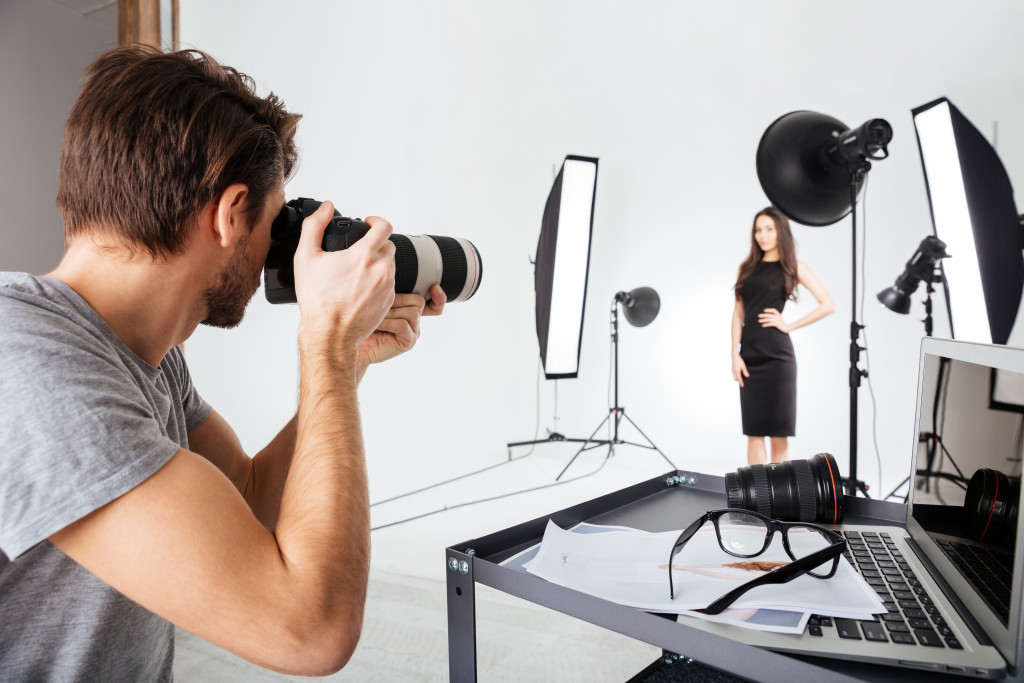These days, thanks to smartphones and editing apps, anyone can be a photographer. It’s even easy to earn money this way. Sites selling stock photography let you turn otherwise unused photos into a small revenue stream.
But if you find your true calling in photography, are you prepared to change careers and make it a full-time occupation? Here’s why it will take more than a good eye, plenty of practice, and some gear upgrades to succeed in this leap.
You need a model that works
Successfully navigating any career change is only partly a matter of passion. Most people need to make a living while they’re at it. If you want to make the leap to becoming a full-time paid professional photographer, you have to ensure it becomes a viable source of income within a reasonably short time.
The obvious starting point would be calculating how much you’ve invested into your gear, plus the cost of living, and using that to determine your rates. But you’ll also want to factor in other variables. What sort of genre do you specialize in? How many clients do you expect to land on average? And when you’re promoting your services, what’s the effective cost of acquisition?
Ultimately, what you want to do from the outset is flesh out your operating structure. Are you a self-employed freelance photographer, or are you running a photography business? This decision affects whether you need to call an employment attorney or draw up your own contracts and model releases. But it also has more profound implications.
A freelancer works flexibly, but they are still engaged in trading time and services in exchange for money. On the other hand, an entrepreneur might have more challenges to navigate, but their earning potential is not limited by their available time. Their services might include selling prints or licensing images for royalties; after the initial effort of creation, they can continue to earn money.
Diversify and be ready to pivot

Despite your best preparations, it cannot be easy to accurately forecast your early returns as you venture into professional photography. A promising stream of clients might slow down to a trickle and dry up. Perhaps most of them were your friends, relatives, or their referrals.
Other factors beyond your control can also improve or worsen the odds of your success. This is especially relevant amid today’s chaotic and uncertain climate. The event industry, for instance, is struggling to navigate a world threatened by Covid-19. If you had specialized in shooting concerts, weddings, sports, or corporate events, your market might have shrunk considerably.
Diversifying your skill set and revenue streams will help you to pivot in case your initial plans don’t work out as well as you’d hoped. Photography is a broad field with many different genres. Directing people and operating out of a studio with controlled lighting and a full set of gear might be your comfort zone. But if you practice shooting landscapes or nature, you could benefit from a surge of interest in travel as the world slowly returns to normal.
Another option would be pivoting along with industry trends. With so many businesses shifting to remote work, a lot of people will be attending video conferences or hosting webinars. Often, they would be doing so with poor lighting and audio-visual equipment. Your expertise as a consultant might prove more lucrative in this realm.
Hold on to your Plan B
Managing a career transition isn’t easy. And when it involves a leap into photography, talent is rarely enough to see you through. Regardless of your chosen specialization, there will be plenty of competition; anybody can take and post amazing photos.
Every photographer has to follow their path to find what sets them apart. Along the way, this slowly builds their career capital. And while you’re on this stage of the journey, following a ‘barbell strategy’ can prove vital to your survival as you evolve.
Keep working a day job that can pay the bills while giving you the freedom to experiment, test the business waters, and further develop your skills. You’re trying to get many factors to come together and work in your favor. Even if you’re a good photographer, you could probably do without the added pressure of having to hit the ground running in terms of income generation.
Once you have these bases covered, you’ll be in a better position to succeed as a full-time photographer. You’ll have a reliable business model and several options when it comes to making extra money and pivoting in response to change. If enough people are willing to pay you to do what you love, that’s the best sign of a successful shift to a new career.

